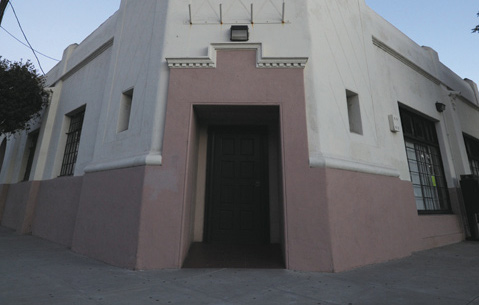Is St. George La Casa’s Savior?
Emotions Mixed Over Pending Sale to Developer

La Casa de la Raza refurbished a massive industrial warehouse on the Eastside more than 45 years before it became the hip thing to do. Covered with historic murals, the nonprofit became a cultural and political hub for the Latino community, offering great food, social services, and live music to people of all ethnic backgrounds alike.
But changes are looming. For years, La Casa’s financial struggles have been well documented. To bail them out, Santa Barbara developer Ed St. George has a cash offer on the table that is not yet finalized. This news has not sat well with some original founding members, who expressed resentment the Latino community may be losing ownership of a center activists worked so hard to build. Others, though, expressed relief that new plans may help keep La Casa’s doors open.
What happens now remains a question. Court documents reveal a few details, but board president Michael Gonzales called the arrangement “very fluid. We’ll just see how it unfolds,” he said.
Two years ago, St. George quietly immersed himself in the nonprofit’s financial problems. He said he got pulled into helping its Board of Directors while working on the proposed sobering center in Isla Vista with Marisela Márquez, UCSB’s Associated Students executive director and former La Casa board president. At the time, La Casa filed for Chapter 11 bankruptcy, where it remains.
Now, St. George, who built student housing in Isla Vista and on the Mesa, wants to buy half of the 26,000-square-foot building for $1.1 million. The other half would be relinquished to an entity called Casa Redevelopment Company that “essentially would remain La Casa,” according to its Los Angeles–based bankruptcy attorney Eric Bensamochan. Court documents indicate St. George would manage that entity, but Bensamochan said that’s “more of an administrative title.” (A bankruptcy judge must approve the plan when the case returns to court in August.)

La Casa has racked up nearly $1 million in debt, including $150,000 owed to the IRS and nearly $20,000 to Marquez, who was not available for an interview before this paper’s deadline. With the cash from St. George, the nonprofit should be able to pay back its debts.
Marquez and Executive Director Raquel Lopez have come under public fire for the pending sale. Gonzales, however, stuck up for them. “If it hadn’t been for people like Raquel,” he said, “La Casa would not be in existence today.” Others have noted that fiscal problems predated her tenure.
“I know they get beat up a lot,” St. George added. “There are a lot of problems with it,” but he’s willing to do “whatever I can do to keep it alive.” The board, he said, will be almost entirely replaced with individuals who have a “little more business sense.”
An added wrinkle, however, is founding member Tomas Castelo, who currently owns the mortgage note. In the past, he has not expressed a willingness to sell it. He was not available for an interview this week. Castelo’s attorney, Tony Fischer, said in an email La Casa has long failed to pay rent.
Fischer argued St. George would have control “over all future decisions.” But St. George refuted that: “It’s not like I get to do whatever I want.” He said La Casa “does not need and does not use” half of the building’s vast space. St. George might ultimately use more of the space and essentially pay rent to La Casa. As for specifics, board president Gonzales said, “We’ll cross that bridge when we cross that bridge.”
St. George explained his interest in the property is two-fold. First, he initially planned to turn the funky old building into a hotel. But, he said, city officials are in the process of restricting hotels from being built in industrial zones as part of the city’s updated zoning process. “It’s unfortunate,” he said. “The design was a very beautiful design.” He envisioned traditional weddings in an indoor/outdoor space that celebrated Mexican artist Carlos Santana.
Second, St. George has a history with the center. “La Casa really represents the Mexican people, the real Mexican culture, not the American Mexican culture,” he said. A Santa Barbara native, the 50-something-year-old said he first visited La Casa as a teenager. He felt even more engrained after his friends — the Sierras, a Latino family on the Eastside — took him in after they found him living out of his pickup truck.
But these days, St. George is going to do whatever it takes to make a profit, claimed founding member Ben Cheverez. “He is smart enough to figure that out.” Founding member Leo Martinez expressed frustration with just about everyone involved. “It’s bullshit,” he said. “I’m just hurt.” Mary Cheverez-Morales, an original staffer who essentially ran the place, added, “I blame the community. I blame the board.”
Jacqueline Inda, who described herself as a concerned community member, said communication between the current board and St. George has occurred behind closed doors. She expressed mixed emotions. She’s glad the building will remain standing. But, she added, “It’s unfortunate that it was a Latino-owned asset, and now we will be there as tenants.”



